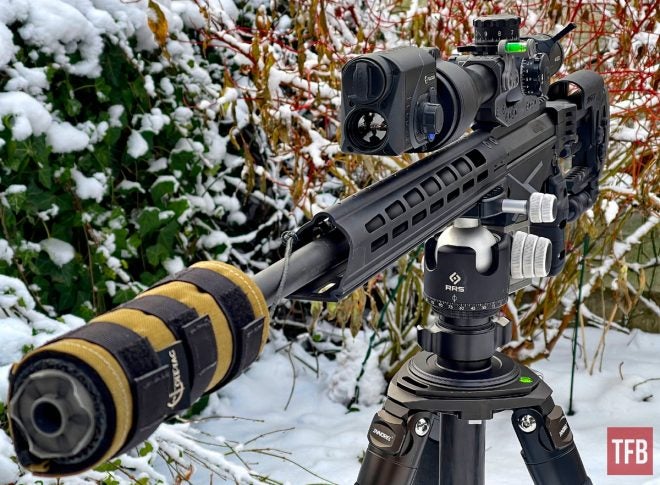It’s no secret that Kahles Optics are trying hard to increase their market share in competition shooting. They are one of the main sponsors of IPSC Dynamic Shooting and they just announced that they are going to be the title sponsor of the 2022 Precision Rifle Series (USA) for the fourth year in a row. The riflescope in this review, the Kahles K525i DLR 5-25×56, is an excellent example of this, where it’s clear that they have listened to the wishes of many competitors and users. Kahles have really done their best to adjust and fine-tune an existing model to the special needs that can occur in PRS competition.
Kahles Optics @ TFB
- TFB Review: Kahles K18i Riflescope with IPSC Reticle (incl. Comparison)
- The Zeiss LRP, ZCO 527 and Kahles 525i Reticles – 2000 Yards
- Kahles Goes Thermal
- Lithuanian Snipers at 2021 Best Sniper Team Competition
- Precision Rifle World Championships 2022

DLR stands for Dynamic Long Range and some of the features include an extra-large turret lettering for easy and fast reading and an extended throw lever and parallax spinner for quick adjustments.
Below: Notice how well you can read the turret even from a distance. The clicks are also very distinct and long, one of the best I’ve tried for sure (0.1 MIL, MRAD or ¼ MOA per click).
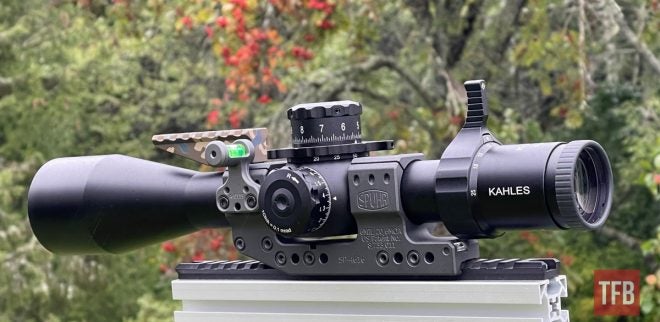
Below you can see the gigantic parallax spinner. It works very well, just make sure you have clearance if you’re using a secondary red dot on the top position. This is a Spuhr SP-4003B mount (custom painted) and I had to move the top rail one step forward which means it isn’t totally secure for impact, but good enough for demonstration.
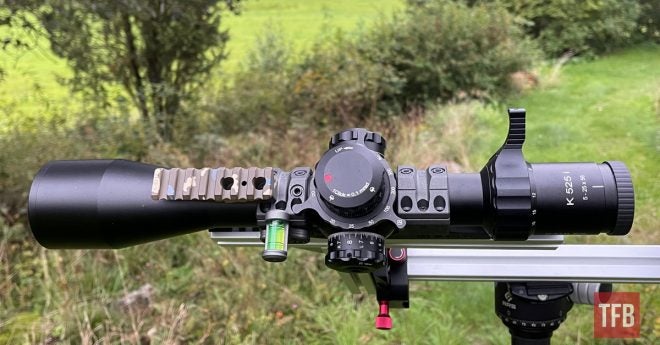
From summer to winter, TFB long-term testing at work. Note the 2nd rev indicator (red).

The marks on the parallax wheel have distances of 20, 25, 50, 100, 200, 300, 400, 500, 800, 1000 meters and finally infinity. I’m not really used to having the parallax adjustment placed here, but it works and it’s very visible.
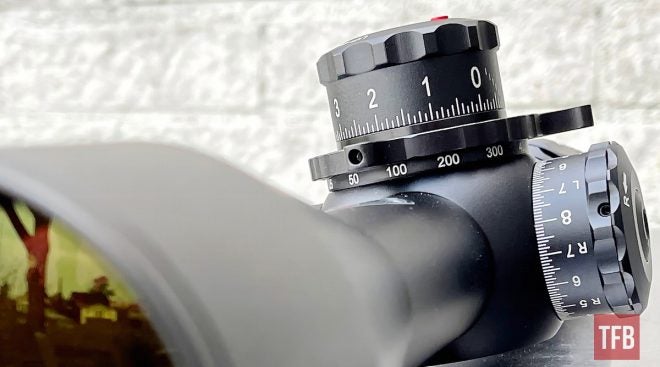
The original Kahles K525i 5-25×56 was released in 2018 and the DLR in 2021. The field of view is between 25.2 – 5.2 in/100 yards, which is quite generous. According to Kahles, that’s an 8% increase over the standard K525i. The distance to the trees in the picture below is about 300 meters, and you see the illuminated SKMR4 reticle in 1st focal plane. The white “thing” in the background, just left of the turret, is in fact the soccer goal which you will see further down.
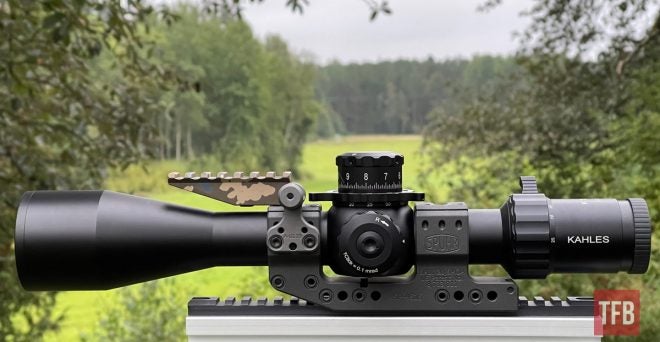
There is a zero stop with .2 MILs of under travel.
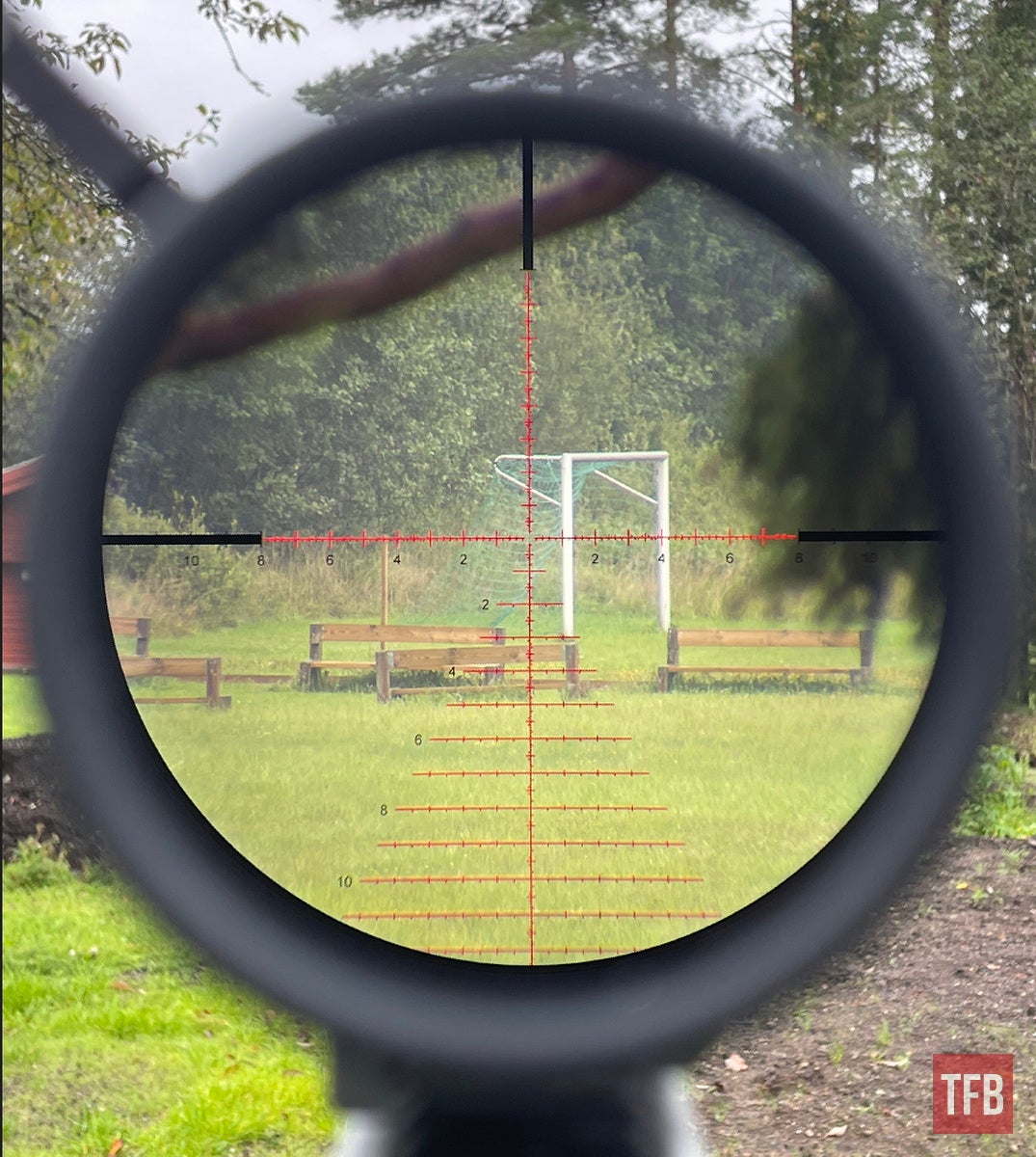
K525i on a Ruger Precision Rifle, with a thermal front attachment to show another possible configuration.
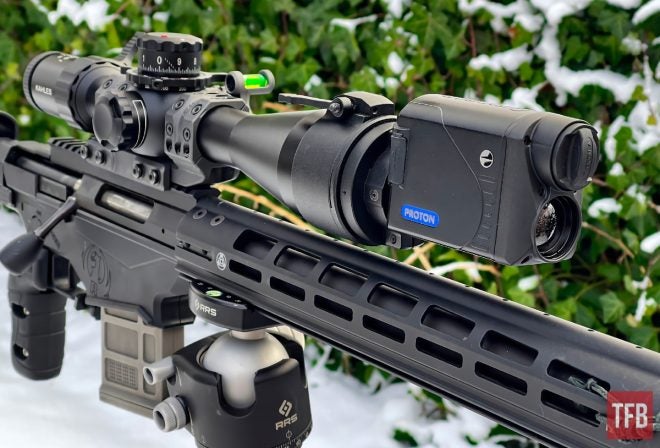
Optical Performance
Kahles has a top optic with their 525i DLR: high resolution and super crisp image. At low magnification, there is some circular distortion. I mention this, but in daily life, no one really cares as you use the sweet spot anyway. The main downside was that I had some chromatic aberration (CA) in the image. It was mainly visible when looking at the chimneys at 1250 meters. I got a purple-blue line in the outer sections of high-contrast objects. I was not able to show or replicate this in any of the images, when I take photos this effect is gone for some reason. Should you worry? Not really. During normal use, I can’t really find any CA. The eye box can be a little sensitive on maximum magnification, not uncommon on high-powered scopes like this one. We had no issues with tracking.
How seriously do we take our reviews at TFB? To be able to do a real benchmark we tried not one but two of the K525i DLRs.

The Reticle
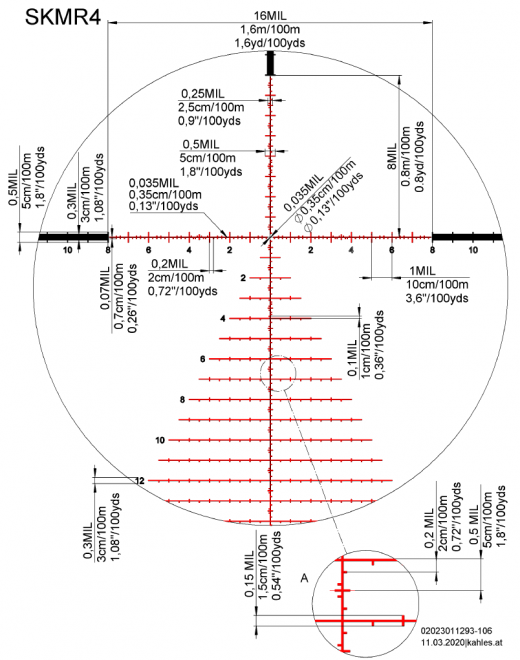
The shooting range from an iPhone, 300 meters. Followed by through-the-reticle images.
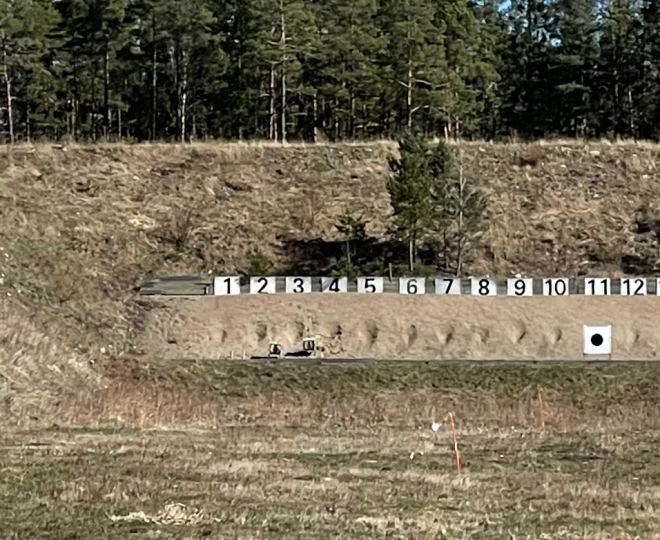

Ringing the steel at 300 meters.

The illumination works well even during daylight. Light clouds, but then it started raining suddenly.
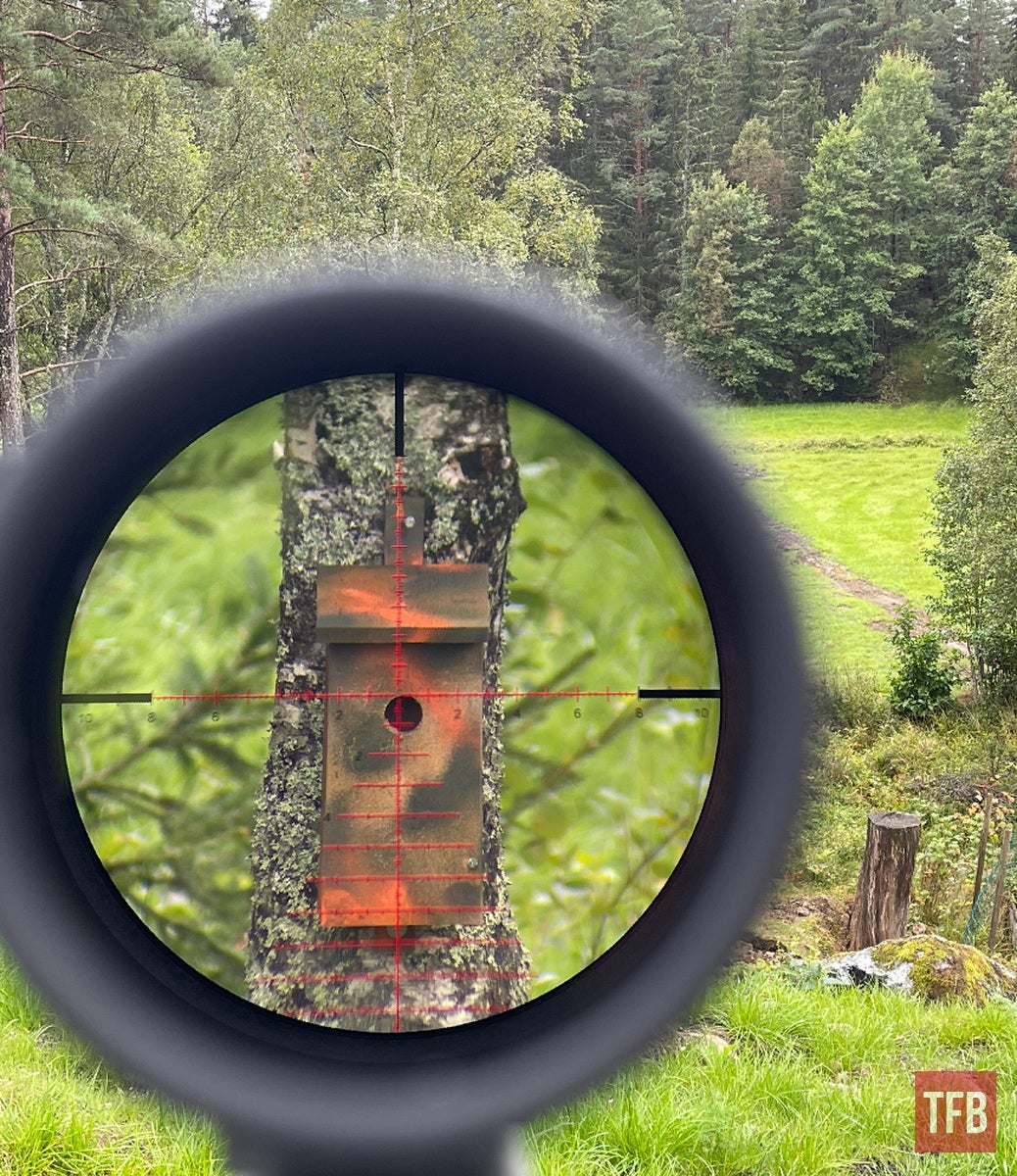
Below: Note how easy it is to read where your magnification sits, 18x power here. Note that the numbers always stay in the same place, and the indication arrow moves with the throw lever. This is a really good solution!

Distance below, about 150 meters, at full power. This would work quite well with 22LR PRS as well.
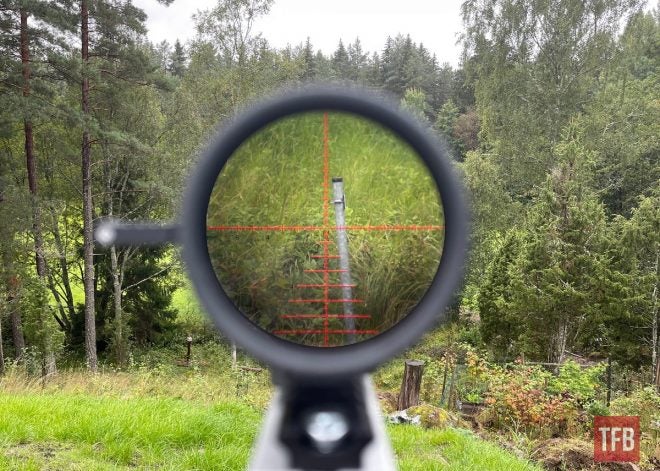
Chimney at 1250 meters. Notice that the center dot is free and quite tiny, just as most users like it.
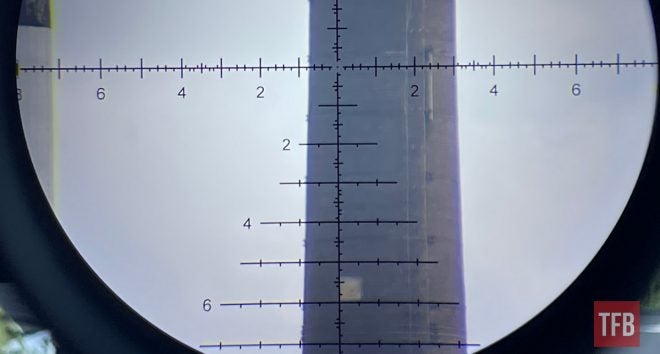
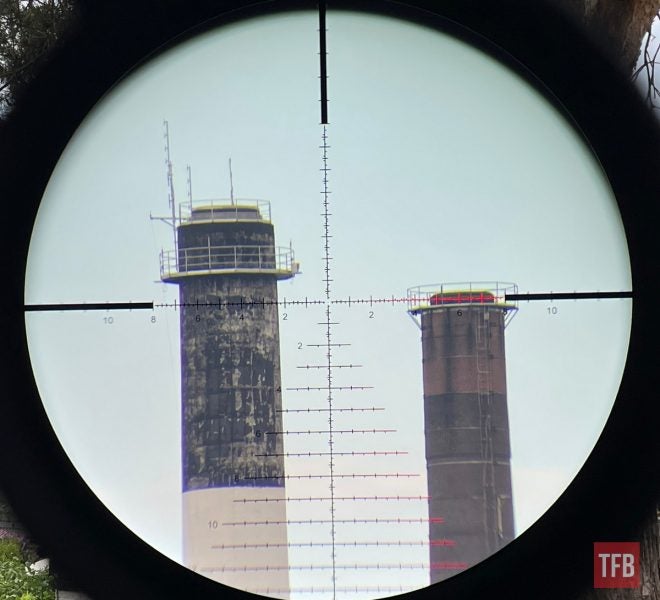
1250 meters is pretty far. You still get all the details.

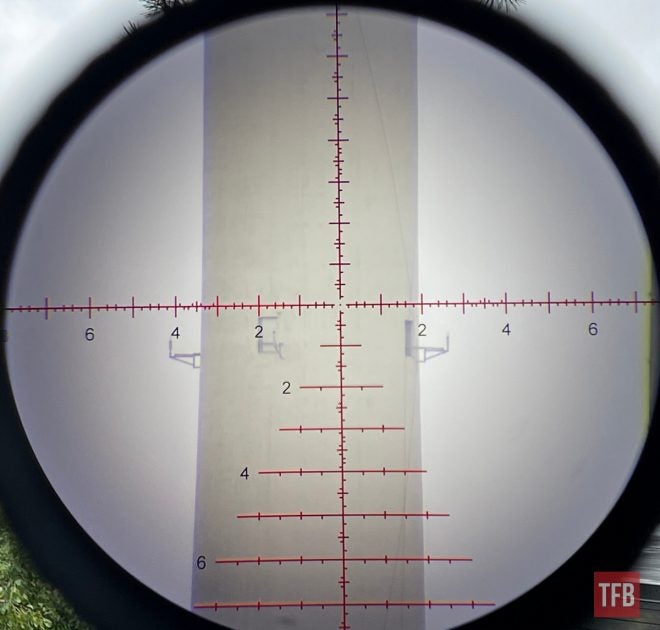
Below: Some of the competitors. K525i DLR (top), Schmidt & Bender 5-25×50 PMII and ZC420 (bottom) The S&B was reviewed here. The Kahles is probably the most ergonomic of them all, and how they solved the magnification wheels is probably the best. I like the ZC527 more than the ZC420, but that’s another story.
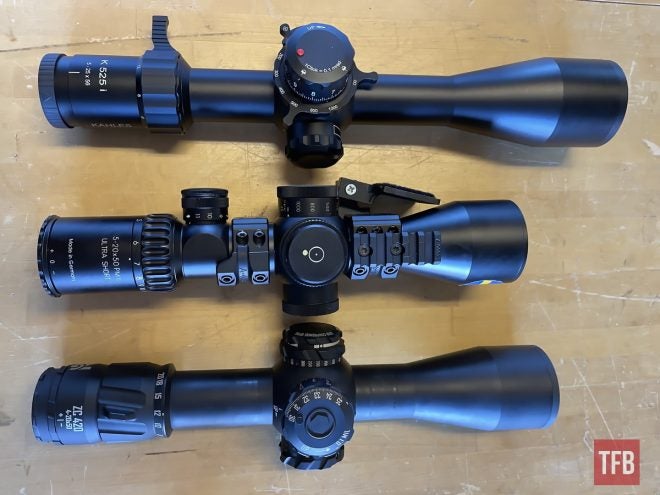
Options, options. Here with Pulsar’s Thermal clip-ons. The Krypton (bottom right) would work best. Soon Swarovski will have their own thermal clip-on. (Meet the tM35)
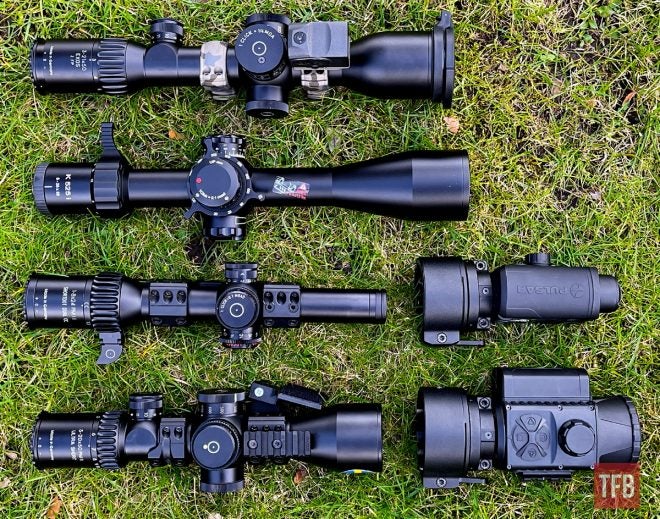

K525i DLR vs. S&B 3-31×50 EXOS below.
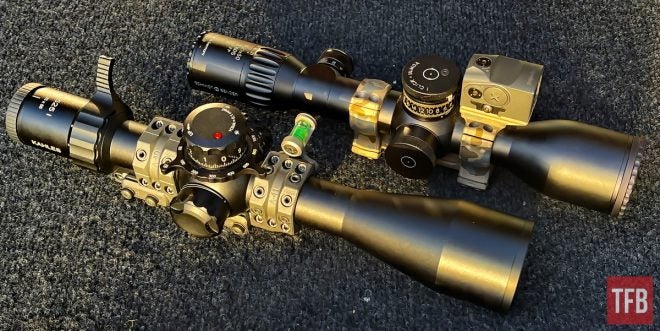
So how does the K525i DLR stack up versus the Kahles K624i? These images give you an idea. At 12x and 300 meters, they had the same measured Field Of View.

Below: You get the idea behind the DLR turret here, traditional K626i bottom. K525i DLR has 16 MILs per revolution, where the K626i has 14 MILs. I like it, with the DLR it is harder to get lost. There is also a twist guard, to avoid accidental dials on the windage if you hit a barricade.
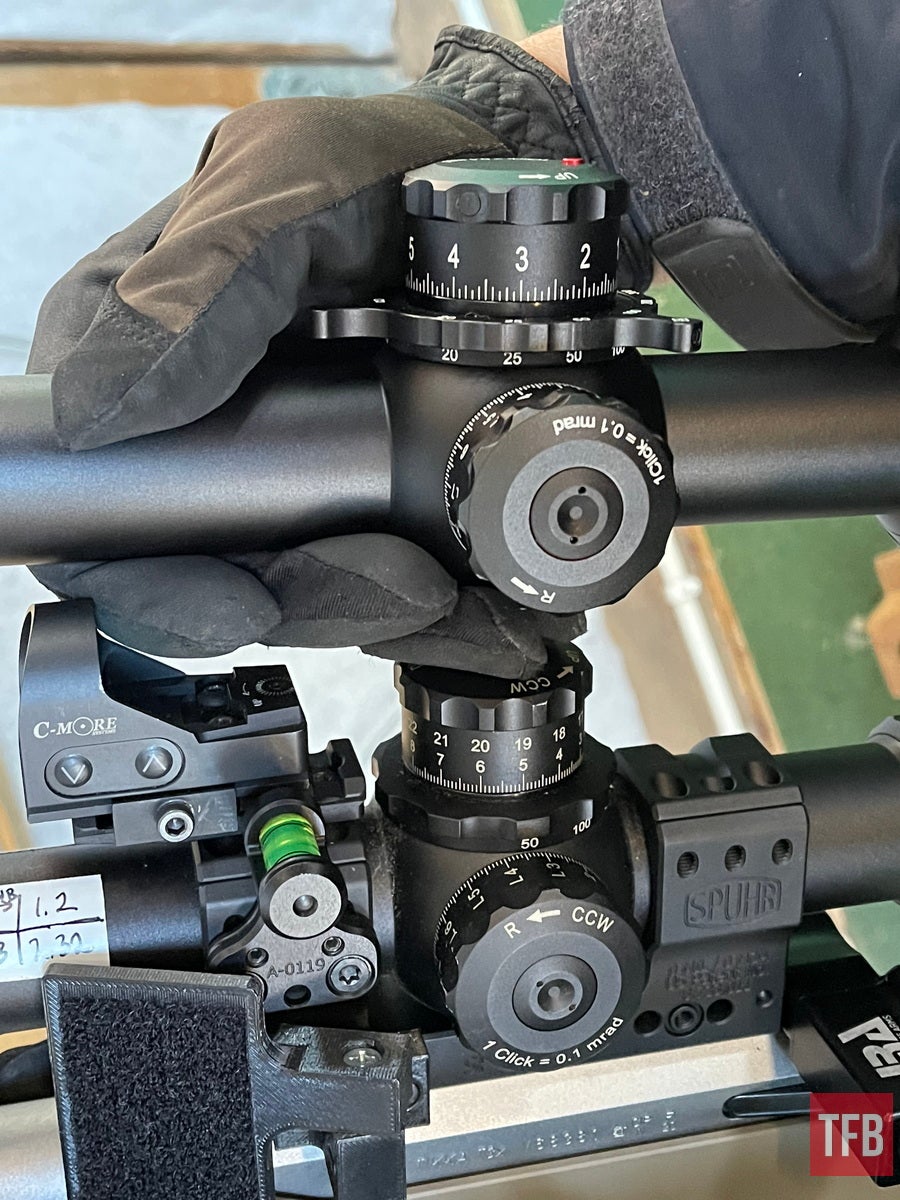
TFB involved a K624 as well, with some extras mounted. This sight still delivers very well.
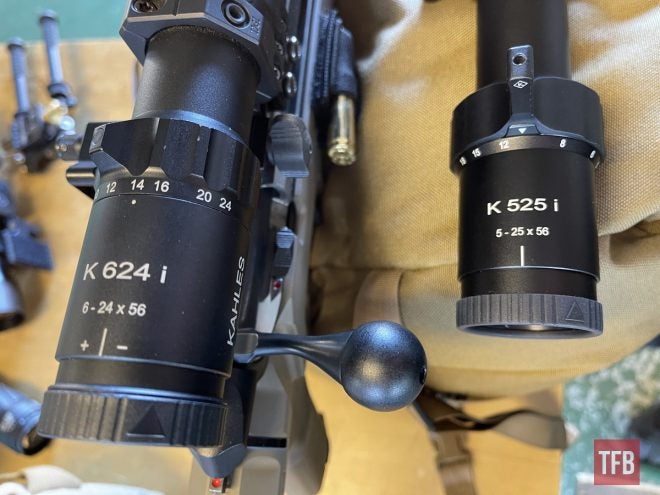
Ruger Precision Rifle in .308 Win with Kahles K525i DLR, Spuhr mount and Proton Thermal. The rifle is unloaded.
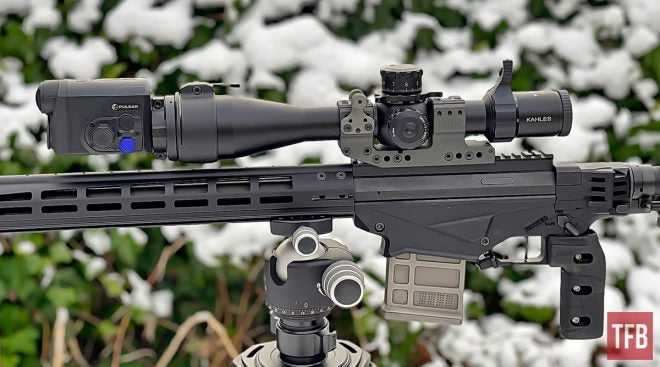
The Mount
In all of these pictures, we have used the Spuhr SP-4003B Ø34 H38mm 0MIL. Priced at €309 + Tax. It has the optional bubble level. This is an extremely solid mount and there were no issues. The Cerakote is optional.
For scopes with long erector housings such as U.S. Optics TPAL and Nightforce BEAST. Distance from ring to ring is 82 mm/3.228″. 0 MIL/0 MOA Height: 38 mm/1.5” Length: 147 mm/5.79” Weight: 268 g/9.5 oz 10-degree wedge included

| Magnification: | 5 – 25 |
| Eye relief: | 3.74 in |
| Field of view: | 25.2 – 5.2 in/100 yds |
| Diopter compensation: | +2 / -3.5 dpt |
| Twilight factor (DIN 58388): | 16.7 – 37.4 |
| Impact correction per click: | 0,1 MRAD |
| Adjustment range (E/W): | 2,9/1,3 m/100m |
| Parallax adjustment: | 20-∞ |
| Tube diameter: | 1,33 in |
| Length: | 14.8 in |
| Weight: | 35.0 oz |
| Focal plane: | 1 |
| Illuminated: | Yes |
| Warranty: | 10 years (2 years electronic) |

The price for the K525i DLR is in the region of $3,550. If you like you can add a bubble lever, sunshade and flip-up covers. There’s a direct link to Kahles here.
Conclusion
I kept the Kahles K525i DLR for as long as I could, but it has to go back to Kahles and it will be missed. The K525i DLR provides a clear, sharp image with good illumination of the reticle. There are quite a few ergonomic features that should interest a lot of competitive shooters. There’s also a possibility to further configure your riflescope with windage left or right. The central arrangement with the parallax on top of the riflescope makes right and left-handed operation easy as well. The turret is top class with easy-to-read numbers and tactile feeling when clicking for range. Optically, it’s up there in the top.
We are committed to finding, researching, and recommending the best products. We earn commissions from purchases you make using the retail links in our product reviews. Learn more about how this works.
 Your Privacy Choices
Your Privacy Choices
